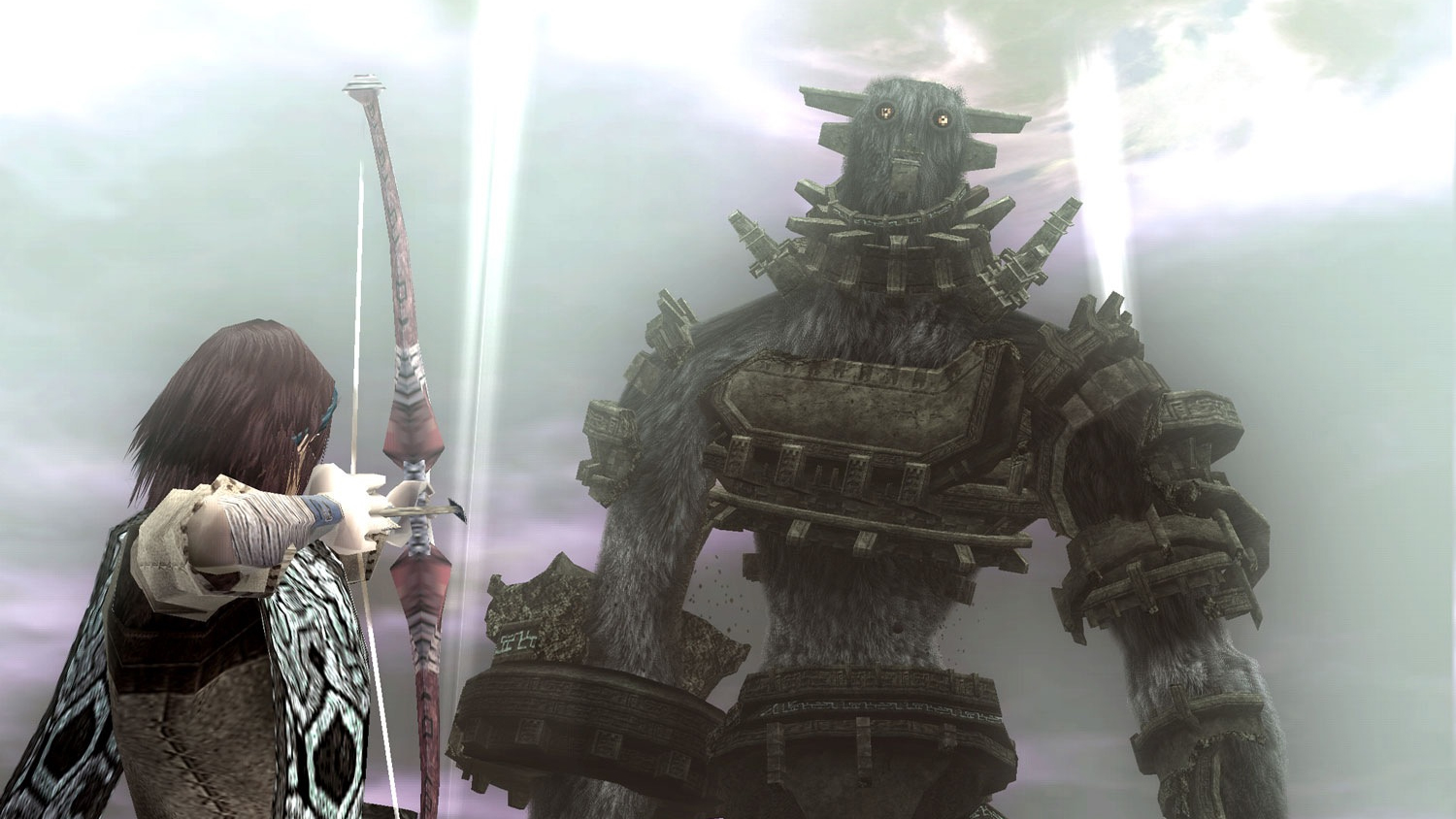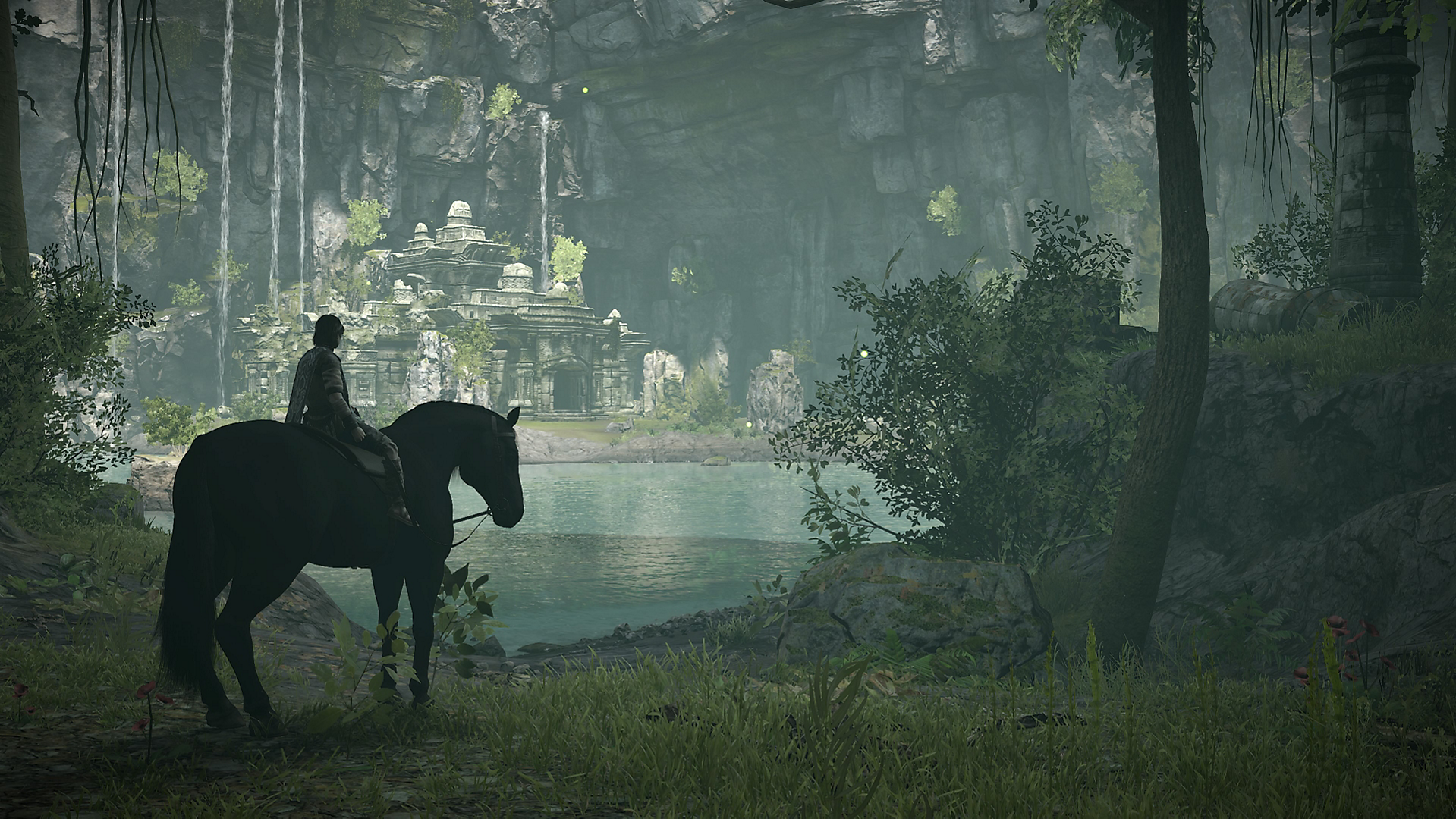It feels strange to write about Shadow of the Colossus as a “Throwback” game. Just this year, I played through its brilliant remake (Developed by Bluepoint). But Shadow of the Colossus turned 15 years old this month, and two console generations have passed us by in the meantime, thus making the PlayStation 2’s technical marvel, a game worthy of remembrance.
Shadow of the Colossus (Metacritic 91/NER: 9.5/10), was a masterpiece for its time in terms of visual design, and remains as moving as ever in terms of game design. There is no other game out there where the goal is to topple 16 giant bosses, that are spaced out in a gigantic (in 2005) open world where there is literally nothing else to do but to seek out these massive “colossi” and bring their life to an end.
I remember having a conversation with a GameStop employee back in 2005, as I was paying for the game on the counter we had a short chat in which he described the game for me as basically, “Just 16 boss battles”. In the most primitive of ways, his description was on point, but Shadow of the Colossus was, and is, so much more than that.
Our protagonist, Wander, arrives at the Forbidden lands looking to resurrect a young beautiful girl named “Mono”, a girl that we assume from the outset, is romantically linked to him. According to a mysterious entity known as “Dormin”, he can bring her back to life, but he has to murder 16 “Idols/Colossi”, he might also have to pay a price in order to bring Mono back to life.
Wander is a silent protagonist, and thus, much of the story is visually implied, and dependant upon “Dormin” itself. The ending had some goosebump inducing implications for those of us who had played Ico before it.
What really resonated with me about Shadow of the Colossus at the time, is that a game had seldom said as much without saying anything, as Shadow of the Colossus had during my playthrough.
Fumito Ueda, the game’s creator and director, wanted to tell a story about cruelty, and Shadow of the Colossus successfully conveys his vision. From the dead young girl, as the mere fact that someone so young should be dead is a terrible example of fate’s cruelty. To the violent death of mythical beasts that had probably lived for thousands of years at the hands of our “hero”. The toppling of these giants in itself is an example of how far human cruelty can go when a goal must be achieved at all costs. Shadow of the Colossus is a dark and somber game set on a beautiful and mostly silent world.
The gradual realization, that our “hero” is indeed a villain, and that his obsession with restoring Mono’s life will consume him in the end is one of the more powerful stories that the medium (Video Games) has ever told.
I don’t think that I have ever felt as emotionally connected to Epona, what I felt for Wander’s horse Agro. In truth, Agro, is only living friend that our character has for the entirety of the game’s 8-12 hour run time, and it makes him all the more important.
In some ways, Agro, is the innocent loyal friend that accompanies a misguided individual to the very depths of hell just because he has no choice but to remain loyal to his friend until the very end. There is cruelty in that partnership too, Wander spared no second thoughts on sacrificing Agro in his pursuit to restore Mono’s life.
Wander, Agro, and Mono’s story is a sad one to the very end, and Wander’s tragic fate is one that is both frustratingly sad, and at the same time, ironically understandable in a “he had it coming” kind of way.

Beyond its wonderful story, Shadow of the Colossus showcased visuals that should have been impossible on the PS2. Slowdown is everywhere, but in 2005, I didn’t really care much about it, as I was mesmerized by the size and intricate detail of both the Colossi, and the gigantic world that they inhabited.
In many ways, Shadow of the Colossus, was the closest that the PS2 would get to having a Zelda game. The gigantic overworld, the epic bosses (all which had a pattern that could be exploited by the player), the silent protagonist, and the horse riding, all felt eerily familiar.
Yet, Shadow of the Colossus introduced its own intricacies to game design, no game will ever be more influential than The Legend of Zelda: Ocarina of Time was for the action adventure genre, but Shadow of the Colossus, at least to me, felt like the next game within the genre that influenced the way that it would move forwards from that point on.
Its minimalist way of storytelling, incredible intricate artwork, the climbing mechanic, and its epic ‘building sized’ bosses, have all been part of the genre – in different games – ever since.
The end goal of the game’s storytelling has remained relevant today. Playing a game like the Last of Us: Part II in 2020, which at the core is a game designed to evoke a strong emotional response from players through its storytelling, reminded me of Shadow of the Colossus.
Two very different games, yes, but very similar approaches, The Last of Us: Part 2 was designed to drive you to anger and hatred, to then drive you to question whether you had turned into a villain in the process of seeking retribution. At its end, it left me questioning my own personal flaws as an individual. Knowing that I was wrong, and yet I still wanted vengeance, because in the end I was selfish, was one of the more demoralizing things that I have experienced in life.
Shadow of the Colossus, funnily enough, drove me to despair in the realization that I was doing a very evil (if unforgivable) thing each time that I felled a Colossi. At the same time the game was a one way train that I had to follow through to whatever end. That end meant turning into a villain.
The artistic brilliance in the game didn’t lie in the fact that it evoked an emotional response from me, but in that it did so with a silent protagonist as my avatar. To that end, Shadow of the Colossus remains as brilliant to day, as it did 15 years ago.

It is hard for me to recommend the original version of the game when a stellar remake exists in full HD glory, and at 60fps (PS4 Pro) readily available today. While a technical marvel at the time, the PS2 version suffers from terrible drops in frame-rates, and muddy graphics by today’s standards. Still, Shadow of the Colossus is a game that each gamer should at least experience once, so if you haven’t, seek out (or download) the PS4 version, you won’t regret it!
